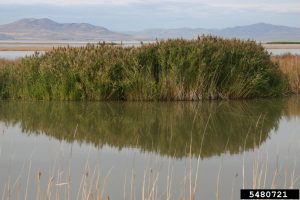Chapter 6: Invasive Weeds
6.2 Characteristics of Invasive Weeds

A basic definition of an invasive plant is “a plant species that has a negative ecological or economic effect on natural or managed systems.” The key characteristic of an invasive plant is one that is spreading uncontrollably, taking over a whole community ecosystem. Of course it is not exactly that simple. We have to consider both the conditions of the location, as well as the unique characteristics of the plant displaying invasive qualities.
In terms of location, it may be some specific environmental conditions are providing a unique niche for the plant population and perhaps there are no diseases or insects which damage or stress it. These conditions combined with the plant’s genetics and unique characteristics, would allow it to grow unchecked, reproducing year after year (maintaining a population) and spreading into other areas.
In some cases when we introduce an invasive plant by mistake, we have introduced it to an area where there are no predators, so it has a niche and doesn’t have anything to compete with. An example of this is Purple Loosestrife (Lythrum salicaria L.) which was sold in garden centers for people to grow in their home gardens and now has spread to wetlands, choking out native vegetation.
In other cases, it might be that we have changed the environment through our farming, mining or urban expansion activities that allows a plant to become invasive. Likewise, any climate changes or shifts can also have this impact.
It is important to note that a plant which is invasive in one location, may not be invasive in all locations.
Review and Reflection